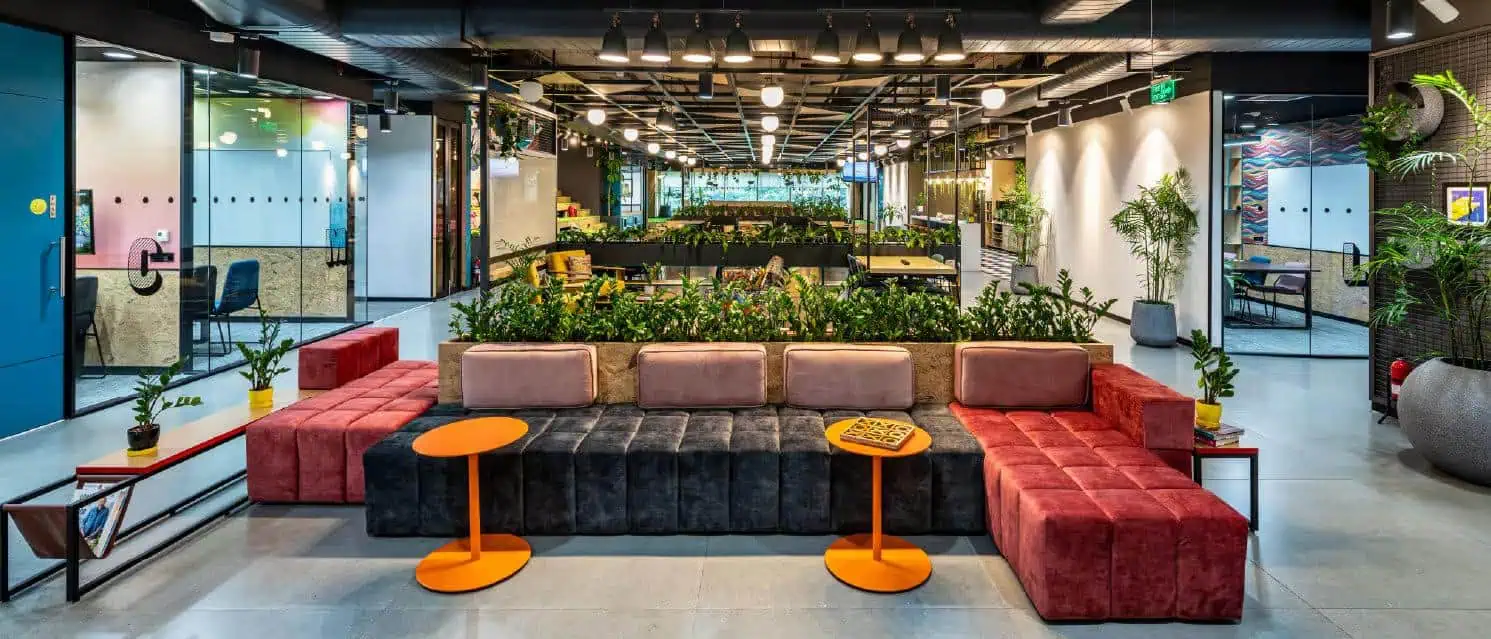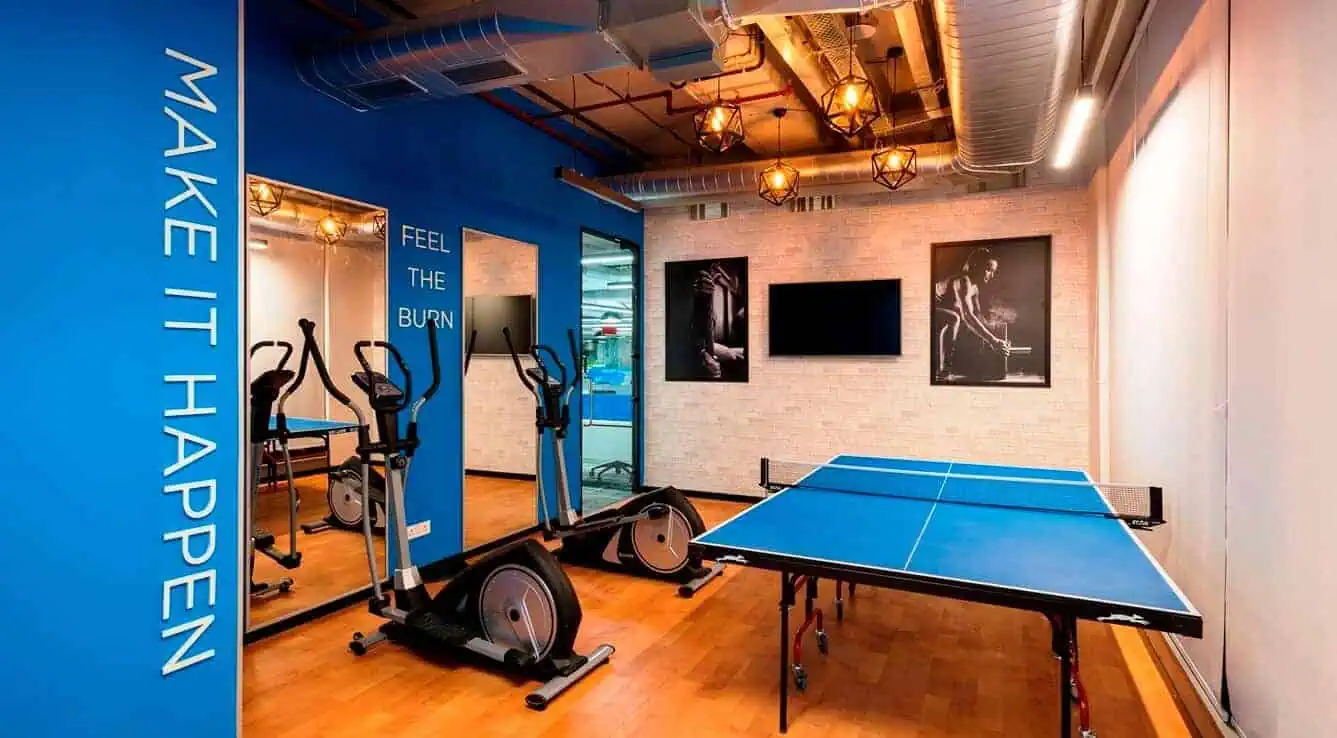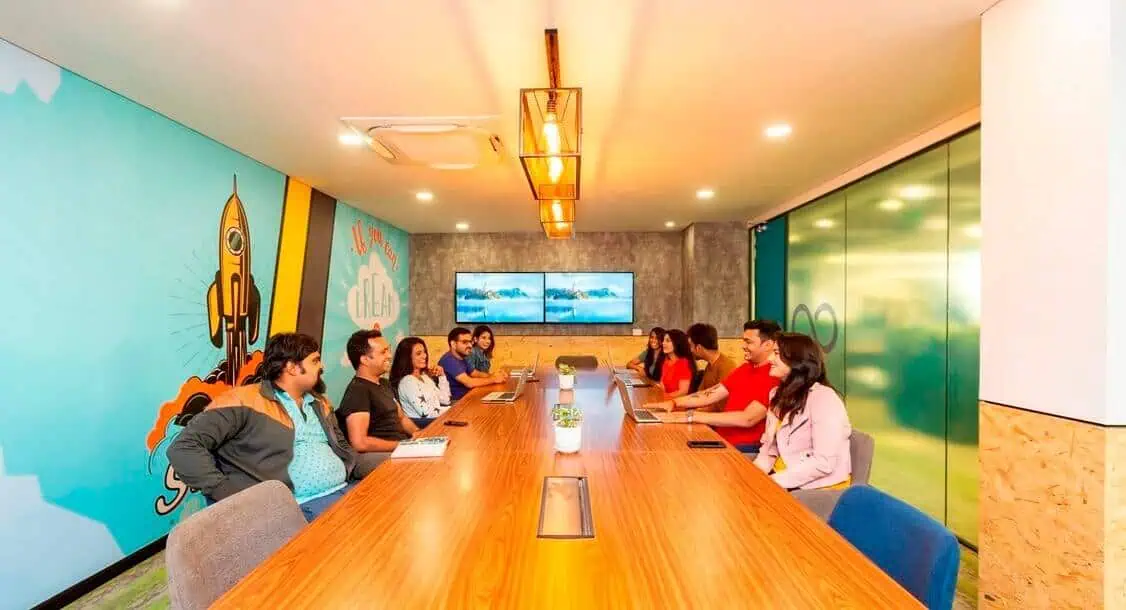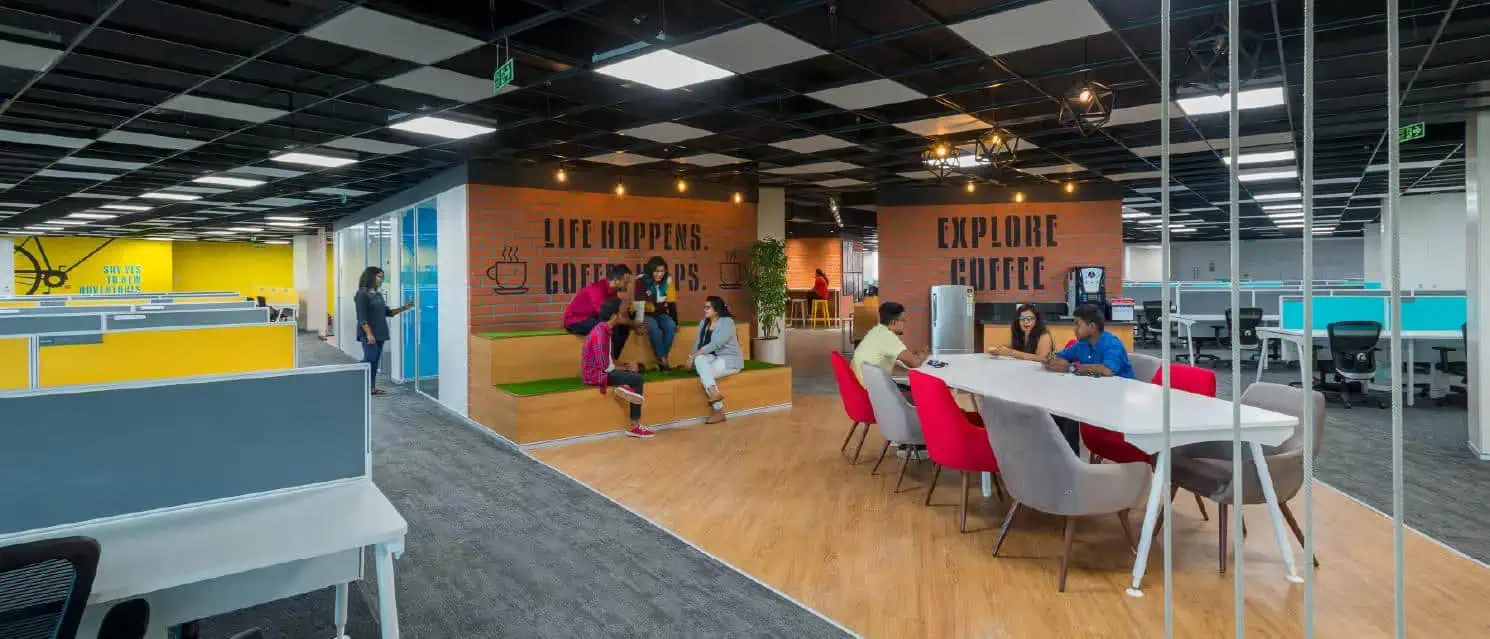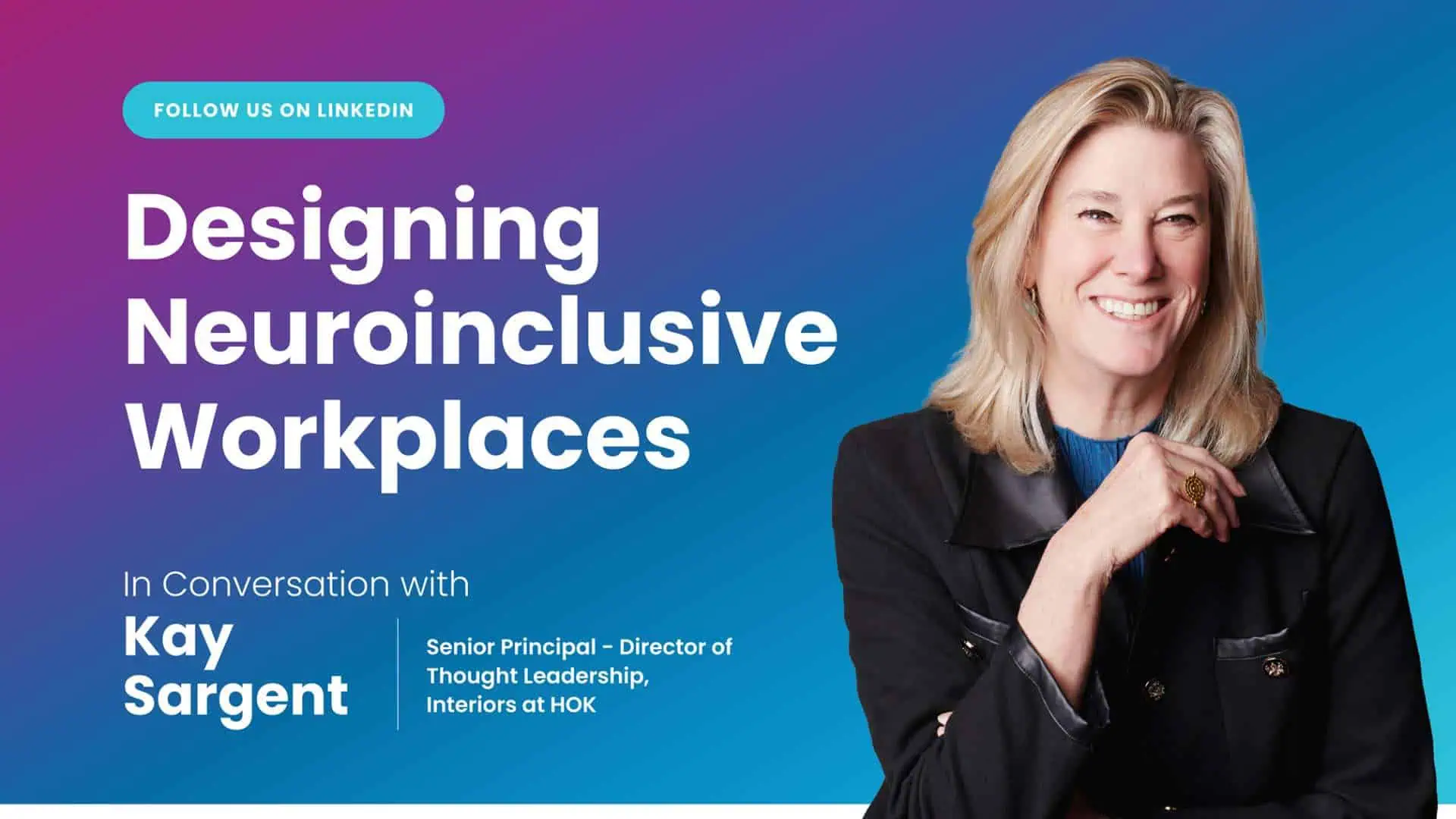With the world pivoting towards a new kind of life that is healthier and safer, many cues would lead us to believe in a changing world. A world where social distancing is common and setting up work at home is better. But does this mean we are never going back to how we were? We approached people from different professions and found surprising answers.
A web developer from Bengaluru when asked about her “work situations” expressed how convenient work-life has become because of the elimination of the travelling part whereas another person from the same field shared the plight of this tough time and how he is about to shift to his home- town along with his children and wife because of the uncertainty.
But does this mean that offices are going to extinct?
No.
Working from home is surely comfortable; however, the importance of the office is never going to extinct. As we recall history, it all started with the Industrial Revolution. With the continuous growth of banking, retail, railway, insurance sectors the need for dedicated administrative offices arose. But that was not all! Offices were created and recreated to give employees an exclusive space to work, collaborate and brainstorm ideas. Later, the advent of millennials brought newer aspects of working and workplaces. This is when architects started implementing in-depth human science in design and offices turned better. Workplaces now aren’t just administrative buildings where white-collar employees gather and work repetitive tasks. Workplaces are now centered on the users and design thinking became a tool that facilitates productivity and health at work. This is how office design became more humane.
Also, many professions require people to be in the office. When we talked to a Senior Executive Manager from a finance firm about the suitability of work from home, he quoted,
 Work like ours isn’t possible from a laptop at home. We need to be in the office to submit different reports containing client’s data which is not secure to be transferred even through company-specific channels like slack or U chat.
Work like ours isn’t possible from a laptop at home. We need to be in the office to submit different reports containing client’s data which is not secure to be transferred even through company-specific channels like slack or U chat.
Although work has got convenient because of the internet cloud services, there are still security flaws like net eve’s dropping that can hinder data. That is why sectors like banking or sales can never become a home-based work.
The Need for a Workplace
No matter how easy working from home gets, there will always be a lack of proper work setting. Be it about the ergonomically standardized work chairs or face-to-face collaboration– a workplace is a major driven factor of productive work. This can also be seen in the rapid growth of co-working places. Co-working places set the perfect example for the need of a workplace for freelancers as well as small enterprises. Workplaces are designed as per the several requirements of employees. That is why the most efficient companies are known to have the best-designed workplaces. And these workplaces aren’t just about the cool culture and ambience; they are in fact about the flexibility and agility that comes with smart workplace design.
WFH Is Not Feasible
The ‘Work from Home’ module did well when we had no choice but to be indoors. But with the relaxation of Coivd19 norms, we have to realise that the new normal will be about curbed social interactions, advanced personal hygiene and safety measure in public spaces. Considering these we would have to plan out a strategy to return to the office accordingly. Not all businesses can rely upon this module. Those in the manufacturing and production sector will have to be back in workplaces to keep going. Thus, rather than adopting something that is not feasible in the long run, we must figure out ways to make work and the workplace feasible.
Those Office Perks
Besides the proclaimed office amenities like gym room or game space at work, there are different underlying office perks. One such perk is the variation in seating arrangements that promote flexibility at work. This comes from the crafty workplace design engineering that brings a holistic approach to healthful work.
a. Work settings:
One of the integral office perks is the ergonomically inclined work settings that include the smart office furniture–crucial for the health and wellness of working people. Working from home may have made people realize the importance of that office chair that helps in maintaining posture or that elevated work desk that keeps you from undergoing musculoskeletal problems. Ergonomic office furniture helps in preventing as well as fixing different health issues of the users. New age workplace design also brings a lot in the area of office furniture variation. From work desk interventions with multiple seating options to the inclusion of separated zones based on activities, an ergonomic workplace setting is a way out of many health risks that come with routine work.
b. Work environment:
If not travelling is a good part of working from home, the productive work environment is the best part of workplaces. Offices were reinvented when designers and researchers found how collaboration and employee interaction fuel productive working and innovation. After all its teamwork that can help in solving the problems faster! Besides, studies have also revealed how collaboration can help in bringing positive work culture in offices that in turn increases employee productivity. People may debate over the significance of virtual collaboration over in-person collaboration. But, digital collaboration requires many factors to be completely successful. It won’t be at all effective if there are gaps in communication and lack of technologies. What in-person collaboration brings to a team is the human touch and the chance encounters at the workplace that is the basis of possible ideas.
 When ten people sitting on one-floor work towards the same goal in the same project, the team effort gets much stronger than collaborating over emails and Zoom calls,” a Data Engineer remarked on the importance of offices.
When ten people sitting on one-floor work towards the same goal in the same project, the team effort gets much stronger than collaborating over emails and Zoom calls,” a Data Engineer remarked on the importance of offices.
c. Company culture:
An office space directly shapes a company’s culture as well as its identity. Imagine Google and Facebook didn’t have those cool offices that they are identified with. No one would then ever know about their amazing work culture! Offices are like business cards that help organizations create an image for their business that helps them grow. Otherwise what is left are just some job positions and paychecks that aren’t enough to build business empires.
d.Those Underlying Opportunities
Yes, along with amenities and perks, there are other vital opportunities that one might miss on in the WFH mode:
e.Networking and peer interaction
Opportunities to network and interact with peers outside the meeting rooms have a lot of potential for personal growth and developing communication skills, which is hard to achieve in the virtual set-up.
f.Workspace balance
Having a buffer between personal space and professional spaces can go a long way in having a proactive workspace balance, but is fading away in the WFH module.
g.Brainstorming and collaboration
Execution and communication of a lot of ideas and thoughts are easier without emails and video meetings. The impact of in-person discussions is hard to translate among virtually connected teams.
h.Employee retention and recognition
When teams are connected virtually, there is a loss of sense of belonging and connection with the company culture. If teams are not engaged well, retention and recognition can go for a toss.
The Bottom Line
In short, offices are important not just to gather people and get the work done, they are important to bring in ideas, to socialize and to make work-life healthy! Besides, there are so many job roles like sales workers, accountants, clerks, industrial workers, lab technicians that require offices to function. It is true that with the current situations, working from home looks viable and safe; however, in the long run, no slack or emails can substitute the impact of face-to-face conversations in offices, even for those who can work from home.
Related Article: Why Coming to Office Is Essential for You

